Shopify Review – What is Shopify and how to grow your online store from home using Shopify
Shopify is an eCommerce shopping platform that lets you create your own online shop and sell goods online.
Away from the web, Shopify also provides the option to use its platform as a POS (Point of Sale) software in-store. These two key attributes make Shopify an incredibly versatile platform for businesses of all sizes. By using Shopify, you can cater to both your online customer, and your in-person customers in your high street stores.
Shopify is one of the leading online ecommerce platforms because of its performance, but perhaps more significantly – because of its ease of use. You don’t need a graphic designer and a web developer to help you build your Shopify ecommerce site. Everything you need is available within the platform itself.
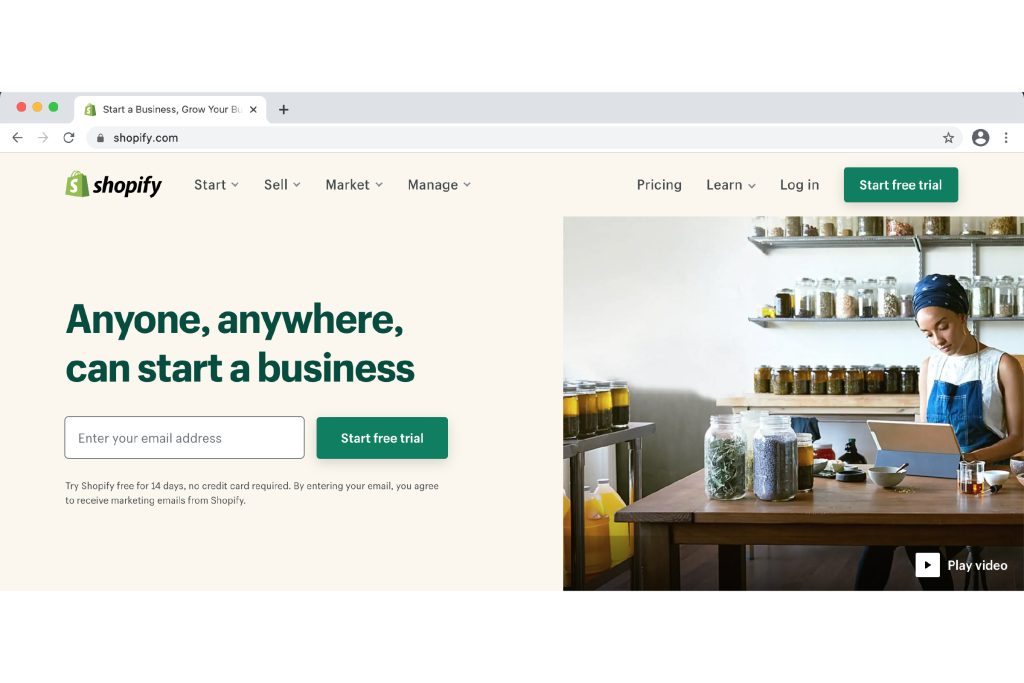
This makes Shopify an excellent option if you’re looking to get online quickly and efficiently. With Shopify you can set yourself up with a professional grade store which is user-friendly and just works brilliantly straight out of the box.
Shopify is great for building an ecommerce site with little or no knowledge of web development or coding. However, if you’d still prefer – you can always outsource your Shopify site development to a freelancer on a digital work platform such as Fiverr.
Shopify Review – What is Shopify
Shopify is what is known as a software as a service (SaaS) tool. Essentially, it’s software you rent on a monthly basis. You don’t own it, but as long as you pay and have access to the internet, you can manage your store.
Shopify is also a hosted SaaS tool, that means you needn’t worry about installing software or paying for web hosting. All of that is included in your subscription package.
This way all you need to do is sign up to Shopify and start creating and managing your inventory. It’s meant to be an all-inclusive package to not only entice you to the platform but also to make it as straightforward as possible for you to use.
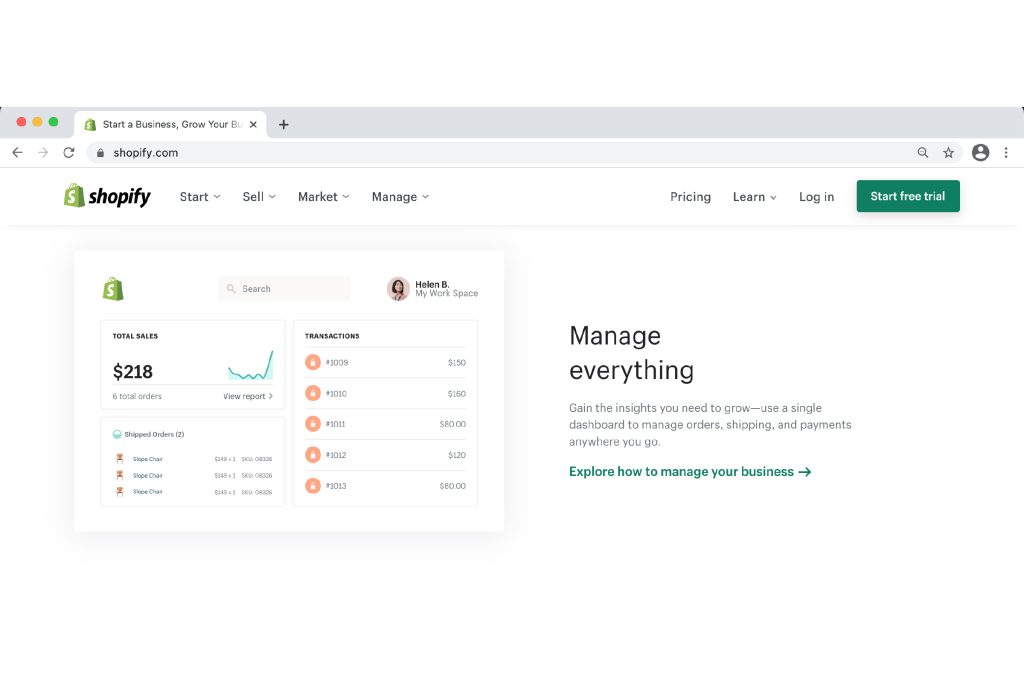
Shopify is there to make your customer’s buying experience as pleasant and as seamless as possible, whilst also making your day job a whole lot easier. Let Shopify worry about the website coding, cross-browser performance, web hosting, security and updates. You just get back to what you do best – selling great products and looking after your customers!
Shopify Review – Shopify Plans and pricing
Shopify has five pricing plans:
- Shopify lite ($9USD/month)
- Basic Shopify ($29USD/month)
- Shopify ($79USD/month)
- Advanced Shopify ($299USD/month)
- Shopify Plus (Negotiable fee – usually around $2,000USD/month)
If you’re not sure which is the right package for you, Shopify offers a free trial. Because of the recent global Coronavirus pandemic, this trial has recently been increased to 90 days (which you won’t see with any of their competitors).
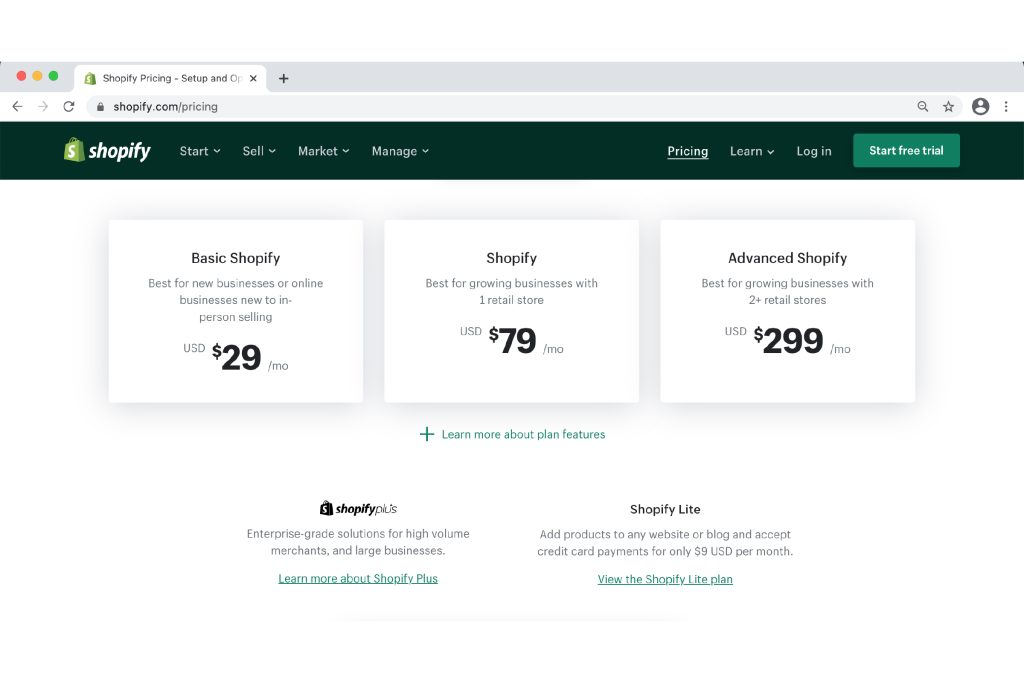
Shopify’s advanced point of sale functionality (which allows you to use Shopify for your physical store as well) carries an additional fee. However, the basic point of sale features come included as standard with all plans.
For features such as click and collect, multi-location selling, and receipt printing you will need to pay an additional $89USD. But this fee won’t kick in until October 2020.
When considering the plans, the very entry-level Shopify Lite doesn’t let you build an online shop. Instead you can:
- Sell through your Facebook Business page.
- Use Shopify’s Buy Button – this can be used on your existing blog or website.
- Use Shopify in a physical location (high street store, or maybe a pop-up market stall), to manage inventory or sell goods.
The Buy Button links your website or blog to Shopify and provides tracking of orders and order fulfilment status. This button also allows you to display all the categories on a product on your own site. So, if you’re using Squarespace or WordPress you can integrate this ecommerce functionality.
Shopify Review – Why people use Shopify for their eCommerce web stores
The great thing about Shopify is you can use it whether you’re just starting out, or even if you’re already an established business. Indeed, Shopify is widely regarded as a best-in-class solution for a huge number of premium brands around the world.
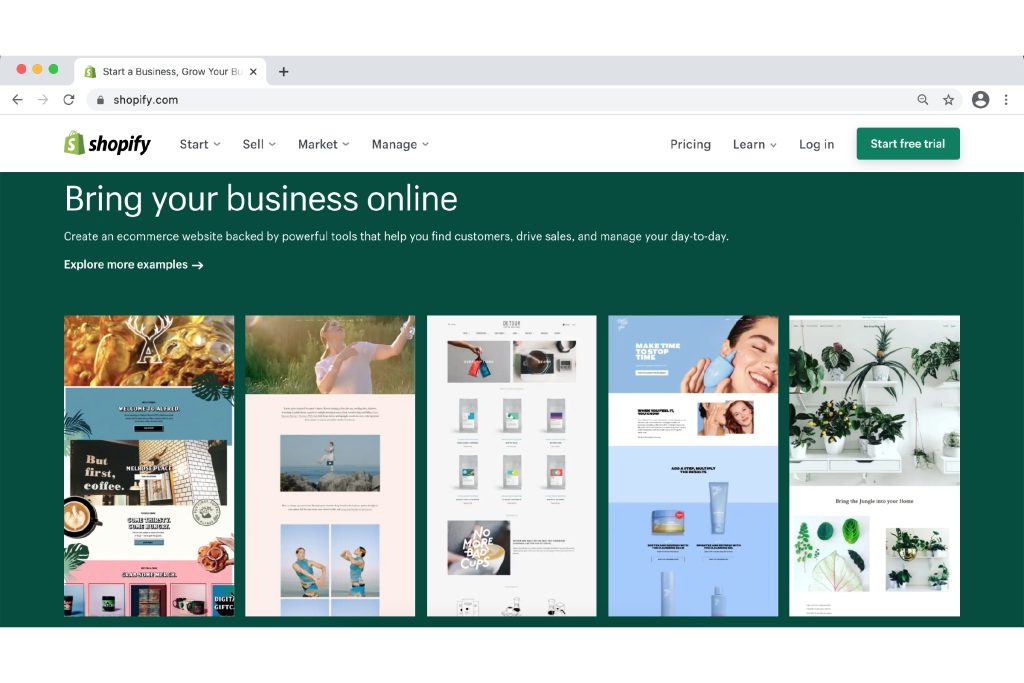
According to Shopify, “Hundreds of thousands of entrepreneurs from over 175 countries trust Shopify to help sell their products.” So, whether you’re looking for an affordable way to start selling your physical or digital products, or you’re looking to grow your business – Shopify can help.
As far as ecommerce software goes, Shopify is clean and easy to use. From the dashboard you can see your ‘Sales Channels’. This is what Shopify calls the places you sell your products or services on. From here you can manage sales on Facebook, Facebook Messenger, Instagram, Amazon, wherever your Buy Button is located, and your online Shopify store.
The ease of use, and how many places you can manage and sell from using Shopify are some of the main reasons hundreds of thousands of people use Shopify.
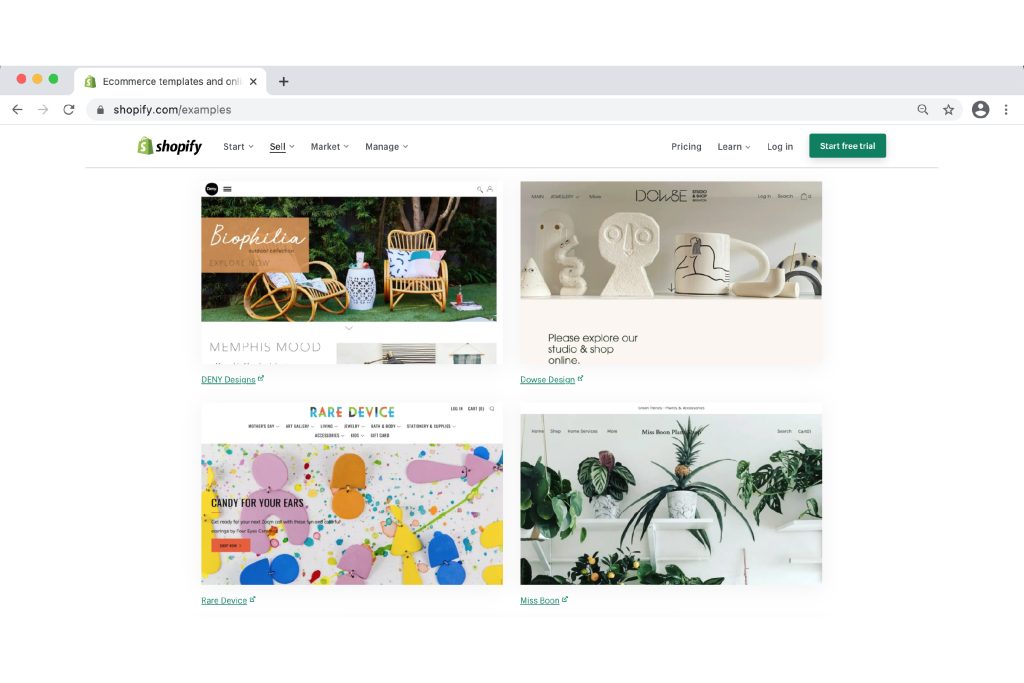
Shopify Review – Security on Shopify
Because the software is so large, and has so many users, it’s in Shopify’s best interests to keep your online store safe. Also, Shopify isn’t just a small startup or challenger product. It has been around for 16+ years now. It is a publicly listed company on the stock exchange, is well-funded, and has established itself as a trusted and successful multi-billion-dollar business for several years now.
Every Shopify pricing plan includes fraud analysis, and Shopify’s stores also come with “the same level of security used by banks.”, built in as standard.
Shopify Review – How to grow your Shopify online store from home
Shopify’s many options for getting started make that the easy part—provided you’ve got something to sell. Once you’ve built your ecommerce site, here are four things you need to do to efficiently grow your online store.
1. Responsive store
Six years ago, most sales were made on a desktop computer or laptop. Now’s it’s predominantly mobile phones. Shopify’s templates are mobile responsive, which means they will resize to the optimal size and layout for the screen they are being viewed on.
If you are using a platform other than Shopify, it’s important to make sure your website looks good and easy to navigate on mobile phones. Poor mobile browsing experiences are well-known to have detrimental impacts on user experience, bounce rates, shopping cart abandon rates etc.
2. Sell more
Sounds obvious right? Well, it’s how Amazon became truly competitive against bookshops in the early days. Amazon could offer more books than your average bricks and mortar shop. If you can offer a wider selection of products you will draw a wider audience and subsequently grow your revenues.

3. Keep customers coming back
It is cheaper to retain existing customers than it is to acquire new ones. This is true for almost all modern consumer markets. With email marketing, members-only offers, giveaways, and social media interaction you can help to keep customers returning time and time again.
Email marketing is useful for letting people know of new products or deals. Emails are also a useful way of keeping customers in touch with you and your business. Also, if customers have added items to their shopping cart but haven’t finalised the purchase, sending them reminders can be an effective way of closing a sale. An abandoned shopping cart doesn’t need to be the end of the story. Re-target that same customer with a timely and relevant email. They might simply have forgotten to complete the purchase, been distracted, or suffered a loss of Wi-Fi.
Members-only offers can be as simple as offering a slight discount for existing customers, or a discount for getting a friend to sign up and buy.
Social media interaction lets customers and prospective customers know that you’re listening; you care and you’re interested in what they have to say.
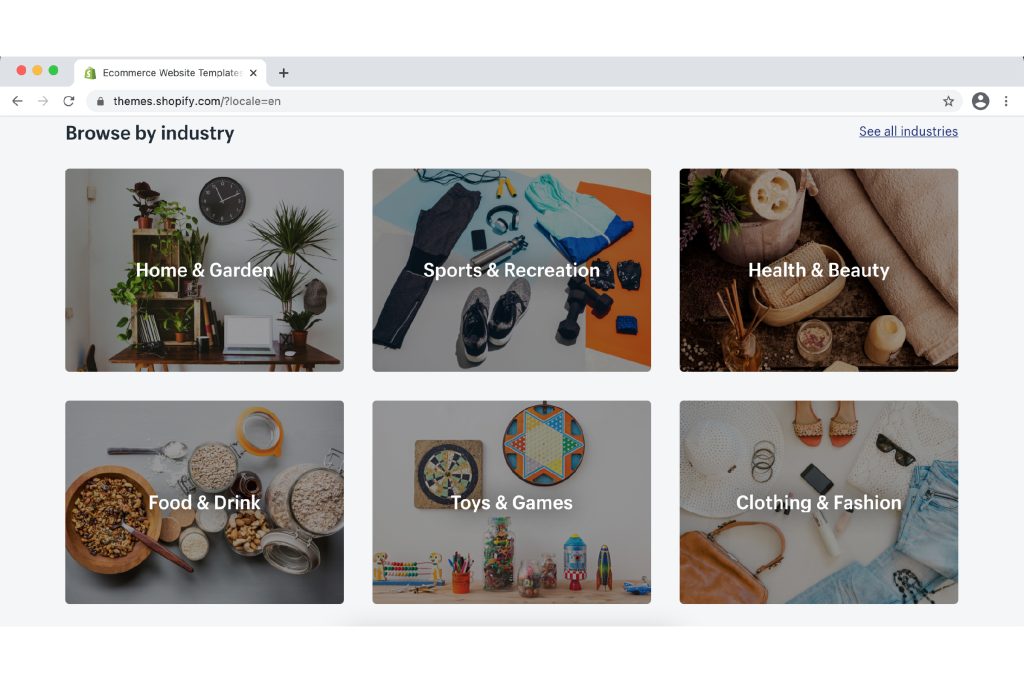
4. Tell your story
Storytelling is how humans connect. Don’t say “my product is good because it does a thing.” Tell the product’s story. Show how your product offers the solution to a problem your prospective customer may not have even known was a problem. Show them why and how your product will improve their life.
Shopify Review – Why is Shopify the leading option for building online stores?
Shopify is certainly the best ecommerce platform if you’re looking to build quickly and start selling. Shopify is incredibly versatile, and you can get a shop up and running in under an hour. Of course, this does depend on how many products you have in your inventory.
However, there is hot competition in the ecommerce market. Shopify is but one of a dozen options out there, albeit the chosen product for many, and probably for the right reasons.
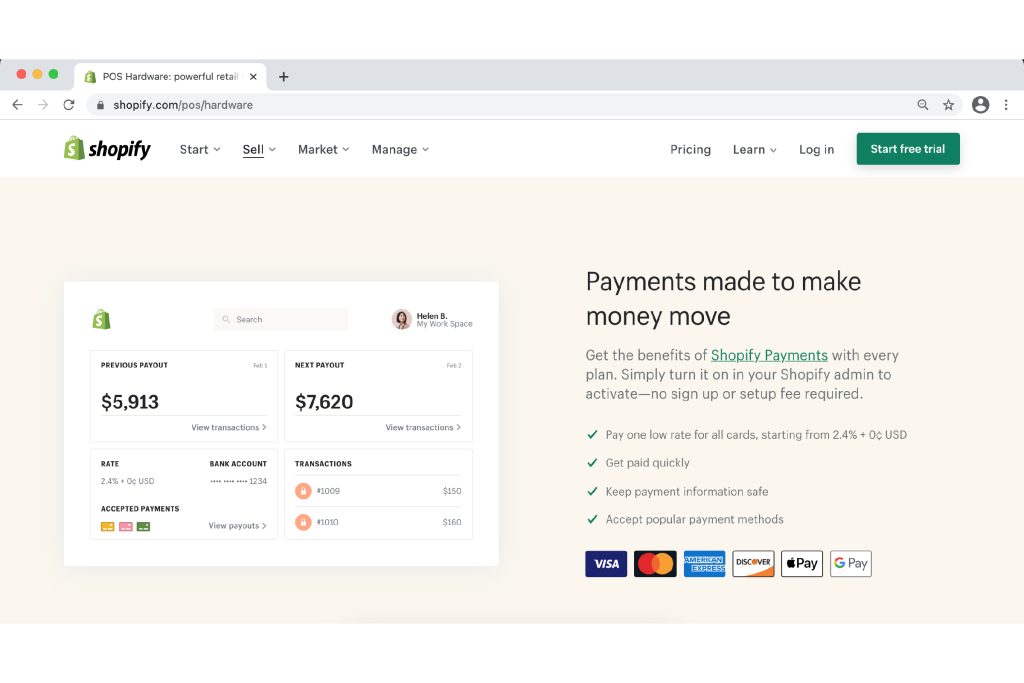
Shopify is one of the leading options for a number of key reasons:
- It is so easy to use, whether you’re just starting out or looking to expand your physical location.
- It has such a high level of security.
- It offers a 90-day free trial (extended to 90 days during Coronavirus Pandemic)
- It’s one of the most competitively priced options on the market.
The best way to find out if Shopify is the best fit for your needs is to take advantage of their 90-day free trial and explore what Shopify can do for you.
A review of key features of Shopify: Pros and Cons
Here is a brief list of the pros and cons of using Shopify:
Shopify Review – 6 Pros and Advantages of Shopify
- If you use the built-in payment processing system, there are no transaction fees.
- Easy-to-use, clean interface.
- Built-in email marketing tool—you can maintain up to 2,500 email subscribers for free.
- Comes with built-in blog (great for content marketing)
- Functionality for multi-currency selling—you may need a Shopify add-on to make this work smoothly.
- There’s a Shopify app for iOS and Android—so you can manage your store from your phone.

Shopify Review – 6 Cons and Disadvantages of Shopify
- Third-party payment gateways incur a transaction fee on top of the existing transaction fee.
- You have to manually edit your product images, so they look the same on your shopfront.
- Shopify’s email marketing features are extremely basic compared to dedicated email marketing tools. If you’re trying to do email marketing properly you may need to use Mailchimp, Get Response, Aweber, Active Campaign or another third-party email marketing software to really achieve great results.
- If you want product reviews and ratings, you have to install an app. There are a few to choose from and the basic features of some are free, but others can cost.
- Reporting functionality is only available on the higher-tier plans.
- If you are using Shopify for dropshipping, there’s no real way to know if your goods are ethically sourced / produced (although this isn’t necessarily an issue specific to only Shopify per-se).
Shopify Review – Other Shopify competitors to also check out
Different needs require different solutions, here are five other ecommerce platforms and why they are good:
- Wix – it’s cheap, and good for creating both a store and blog.
- BigCommerce – you can access multiple storefronts on one platform. It is the strongest alternative to Shopify.
- Ecwid – this is great for social selling. If you already have a website, you may want to check this out.
- Squarespace – this will give you more flexibility in creating your shopfront. It is better than Shopify at displaying video, blog posts and images. However, its ecommerce functionality isn’t as great as Shopify’s.
- WooCommerce – add a shopping cart to a WordPress site. This is only useful if you’ve already got a WordPress site or plan on going down that path. It also ties you to (relative) limitations of being on WordPress.
Shopify Review – Want to read more?
For a second opinion (or two!), we recommend the following great posts and Shopify reviews:
